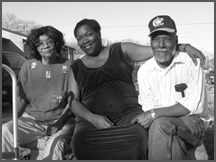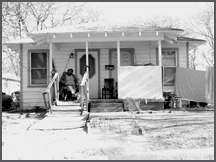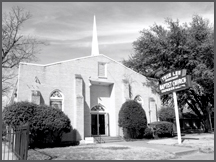History of Frazier Courts Neighborhood
The history of Frazier is the history of South Dallas: pride, struggle, decline and promise.

Most homes in Frazier were built in the 1920s and 30s. At that time, white families inhabited South Dallas, including Frazier. That began to change after World War II, when thousands of African American families, many of them headed by war veterans, left the rural areas of East Texas to move to Dallas. Despite white resistance, sometimes flaring into violence, South Dallas gradually changed until in the 1970s most residents were African American.
Frazier’s name came from the local elementary school, which was named in honor of Julia Caldwell Frazier. In 1919, Mrs. Frazier was the first African American woman to serve as a high school principal in Dallas. A college graduate in a time when few women went to college, she encouraged gifted students to pursue a classical education, including the study of Latin, and to get college degrees. Unfortunately, Julia C. Frazier Elementary School was closed in 2012 due to underpopulation.

In the 1970s, eminent domain took the homes of dozens of neighborhood residents in order to create more parking lots for Fair Park. Some residents went to court, but did not succeed. The incident left a bitter legacy of distrust between residents and City Hall.
At roughly the same time, the population of South Dallas (including Frazier) began to decline as segregation gradually eased and many middle‐class African Americans chose to move to suburban neighborhoods previously closed to them. Over roughly 40 years, the population of South Dallas dwindled by more than half. This attrition was accompanied by significant public and private disinvestment. The result is that Frazier, despite its rich history and isolated pockets of strength, became one of the most distressed neighborhoods in the city.

In the zip code that includes Frazier, 75210, median household income in 2008 was estimated at just over $16,000. An estimated 58.6 percent of the population lived below the poverty line. The estimated median home value was less than $50,000. Many blocks are a patchwork of vacant lots, abandoned houses and occupied homes in disrepair.
However, that is not the whole story. Significant positive developments are beginning to change the face of the neighborhood. DART’s new Green Line runs along Scyene Road, a boundary to the neighborhood. Hatcher Station opened in 2010. Baylor Health Care System built the Diabetes Health and Wellness Institute, a health clinic devoted to diabetes care at the Juanita Craft Recreation Center. The City of Dallas is aggressively acquiring derelict properties through its Land Bank program, and the City’s community prosecutors are working with residents to make neighborhoods safer.


